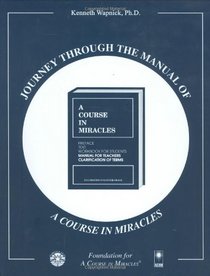Search -
Journey through the Manual of A Course in Miracles
Journey through the Manual of A Course in Miracles
Author:
The manual for teachers is organized around two themes and variations of these two themes. The first is that of separate versus shared interests, mentioned in its full form in the opening question, Who Are God s Teachers? There Jesus says of the teacher of God: His qualifications consist solely in this; somehow, somewhere he has made a delibera... more »
Author:
The manual for teachers is organized around two themes and variations of these two themes. The first is that of separate versus shared interests, mentioned in its full form in the opening question, Who Are God s Teachers? There Jesus says of the teacher of God: His qualifications consist solely in this; somehow, somewhere he has made a delibera... more »
ISBN-13: 9781591422075
ISBN-10: 1591422078
Publication Date: 1/23/2008
Pages: 246
Edition: 1st
Rating: 1
ISBN-10: 1591422078
Publication Date: 1/23/2008
Pages: 246
Edition: 1st
Rating: 1
5 stars, based on 1 rating
Publisher: Foundation for A Course in Miracles
Book Type: Paperback
Members Wishing: 1
Reviews: Amazon | Write a Review
Book Type: Paperback
Members Wishing: 1
Reviews: Amazon | Write a Review




